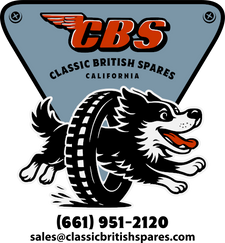
Service Bulletin: Zener Diode Installation
Installing or replacing a zener diode might seem like a pretty simple procedure but according to this original Triumph service bulletin there is a "recommend" way of doing soon. We will be reviewing the "Triumph way" in today's technical blog post.
This service bulletin was released to all Triumph dealers on August 21, 1971. Service bulletins where to inform dealers of recalls, changes and updates on various models.
Although this bulletin states its in reference to the T150 models it can be applied to most British marks including BSA, Norton, and other Triumph models.
Let's get right to it...
What is a zener diode?

Another common word for a zener diode is a voltage regulator. Every motorcycle or vehicle has some form of a regulator.
Here is a quick quote from wikipedia on what a zener diode is - "A zener diode is a particular type of diode that, unlike a normal one, allows current to flow not only from its anode to its cathode, but also in the reverse direction, when the so-called "zener voltage" is reached."
How to remove a zener diode
Heat sink as shown on a 1968 Triumph TR6R. The zener diode lock nut is hidden behind the plastic button
Removing the zener diode from your motorcycle is an easy procedure. Simply get the correct size socket and loosen the lock nut while holding the larger body's nut with a wrench.
Always be sure to keep any washers or lock washers that are used to secure the diode to its mounting surface.
How to install a zener diode

Have you ever mounted a zener diode and to your suprise had the diode snap at the threads?
Chances are you over torqued the diode causing it to break. Yes for those who are not aware there is indeed a torque rating for Lucas zener diodes. (see below for the torque specs)
The installation of a zener diode is a little bit more complex than you might think and it requires more work than slapping it onto your heat sink.
Before installation of a zerner diode it is recommend that the surface that it is being mounted to is clean from debris, oil and rust. Cleaning the surface with a cleaning solvent is recommended. Observe that the ground is clean to ensure a good contact.
If the surface is rusty or corroded we highly recommend that you get a file and remove all debris until metal is exposed. This will give you a better contact with the mounting surface.
Once your surface is clean and ready to be applied it is recommend that you use the proper lubricants. (see below for the recommend lubricants)
Torque rating
Below is the lucas zener diode torque rating. Keep in mind the torque rating is in inch pounds. If you do not have a torque wrench, please be cautious when tightening the diode - stripped threads and broken threads are a very common occurrence.
| Part Type | Torque Rating | Fitment |
| Lucas zener diode (6 volt and 12 volt) | 22-28 in/lbs | All D.C. models |
Recommended lubricants
![]()
G.C. electrical silicone compound #10-8101
Triumph recommends to use one of two types of compounds on the threads and base before installing the zener diode to its mounting surface.
I was not able to find G.E. silicone compound G-640 and G-641 anywhere but I was able to obtain the G.C. 8101 compound.
| Brand | Type | Product # |
| G.C. | Electrical silicone compound | 8101 |
| G.E. | Electrical silicone compound | G-640 or G-641 |
Conclusion
Before I discovered this service bulletin I would personally install diodes the same way most folks would - no gauge to measure torque and lack of sealant.
By reading this Triumph service bulletin it has motivated me purchase the correct tools for when I have to service another Lucas zener diode on a vintage British motorcycle.
For more blogs like this one please feel free to checkout some of our other content by clicking here.
Feel free to drop us a comment by commenting in the section below. Thanks for reading!



colin moore
They used this crude form of voltage regulation on early Indian Lambrettas.
Mitch McCaw
Is the GC Silicone compound dielectric grease?
augie lombardozzi
My 76 Bonneville cooked the zenner diode. It started to fry the connector but fortunetately I saw this happening and shut it down. The fuse did not blow. When I tried to restart there was a short through the diode that blew the fuse. The zd looks as if insulation melted. I would like to diagnosis why before I install a new zd. I will connect this one to an external from an older Triumph or buy one similar. DATE—1/2019. Radio shack is out of business, I will find a different source. All advice/help is greatly appreciated !!! Augie
jayakarthick
Today the circle winding machine is one of most open machines from the pushed division, which can winding the bend onto spool, bobbin and whatnot. The turn winders are moving in setting of the potential and level of the speed. Since, these machines are composed from multi speeded machines to settled speed levels with different sorts and classes, like medium, wide and additional essential machine that executing as showed by the speed level.Shuttle
Classic British Spares
@Digitron – that is correct, positive ground.